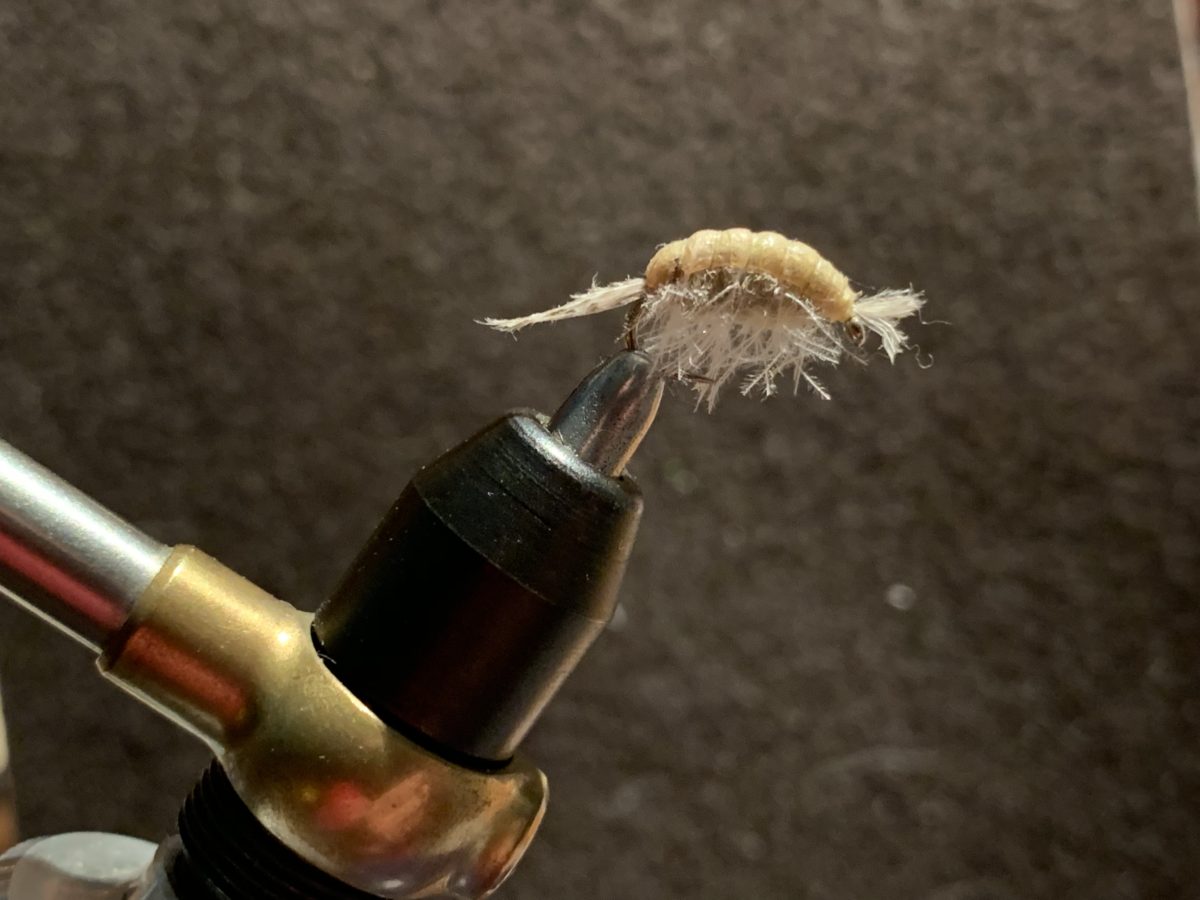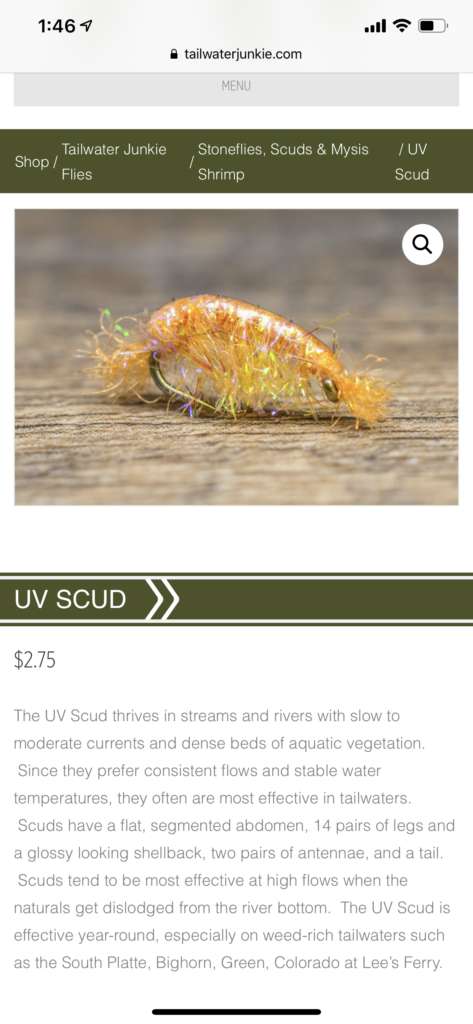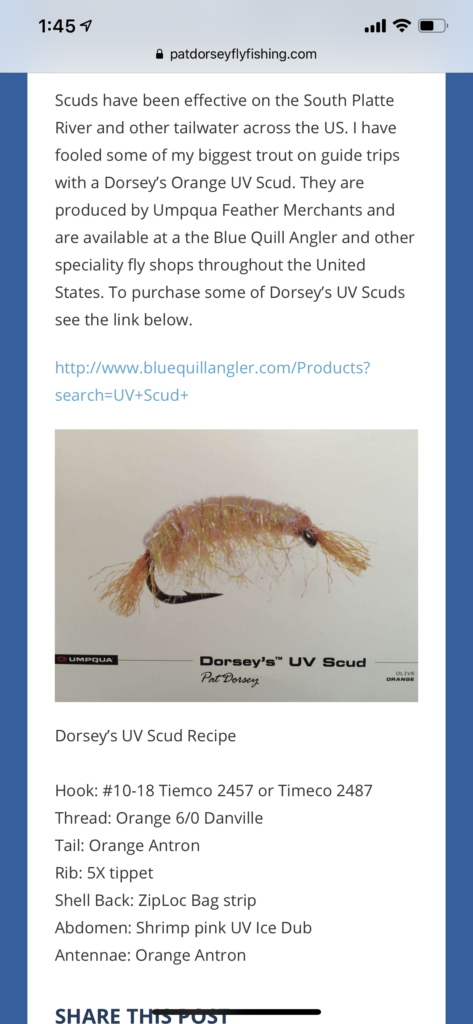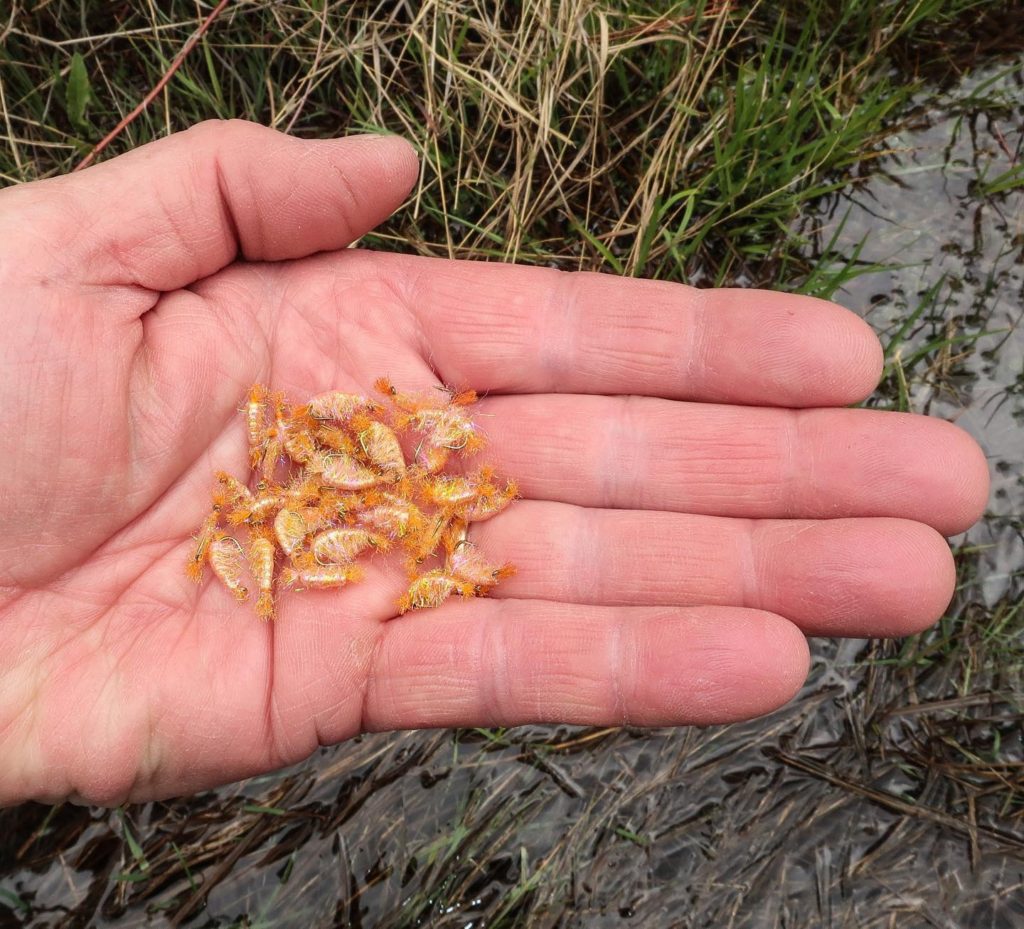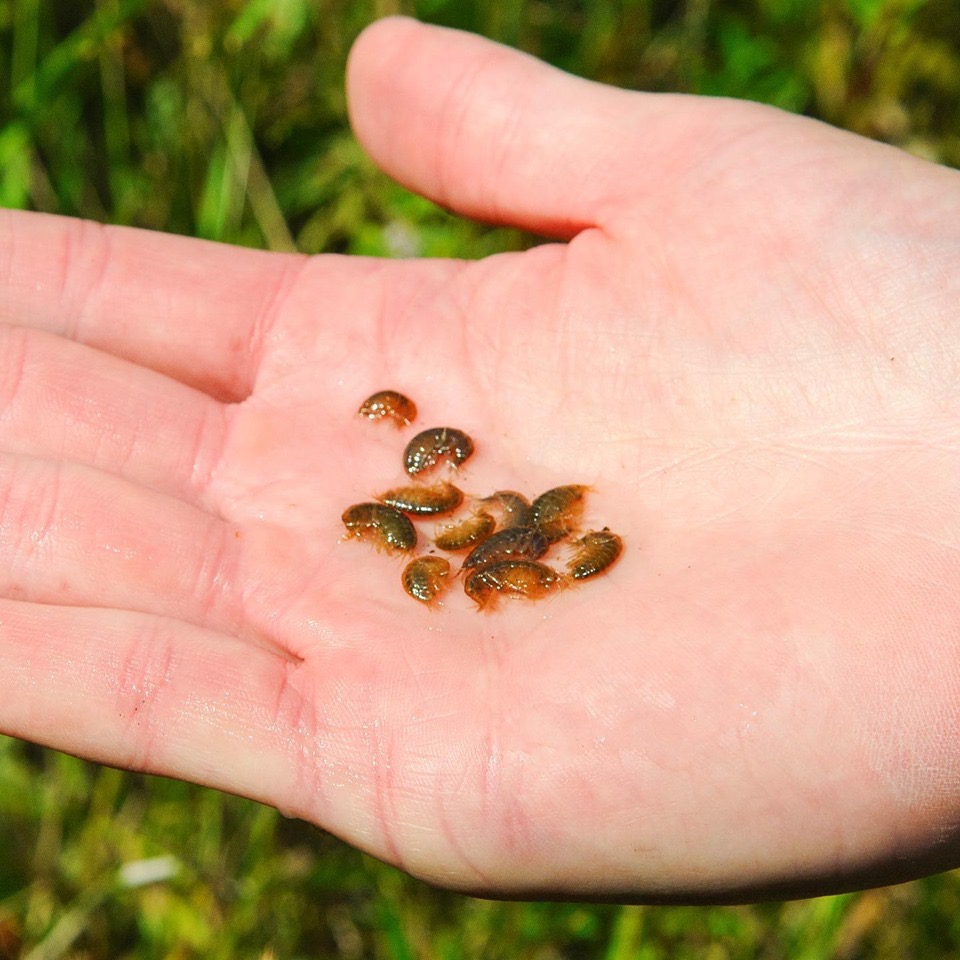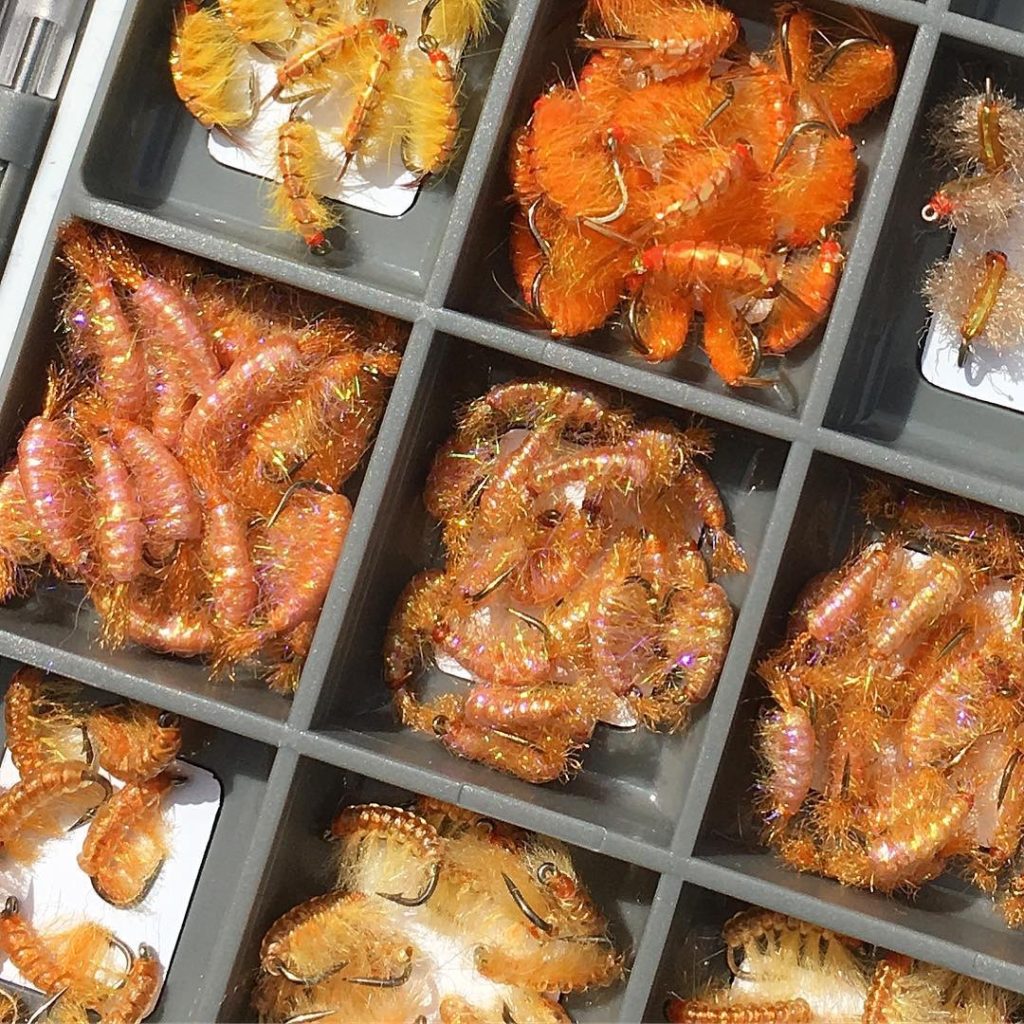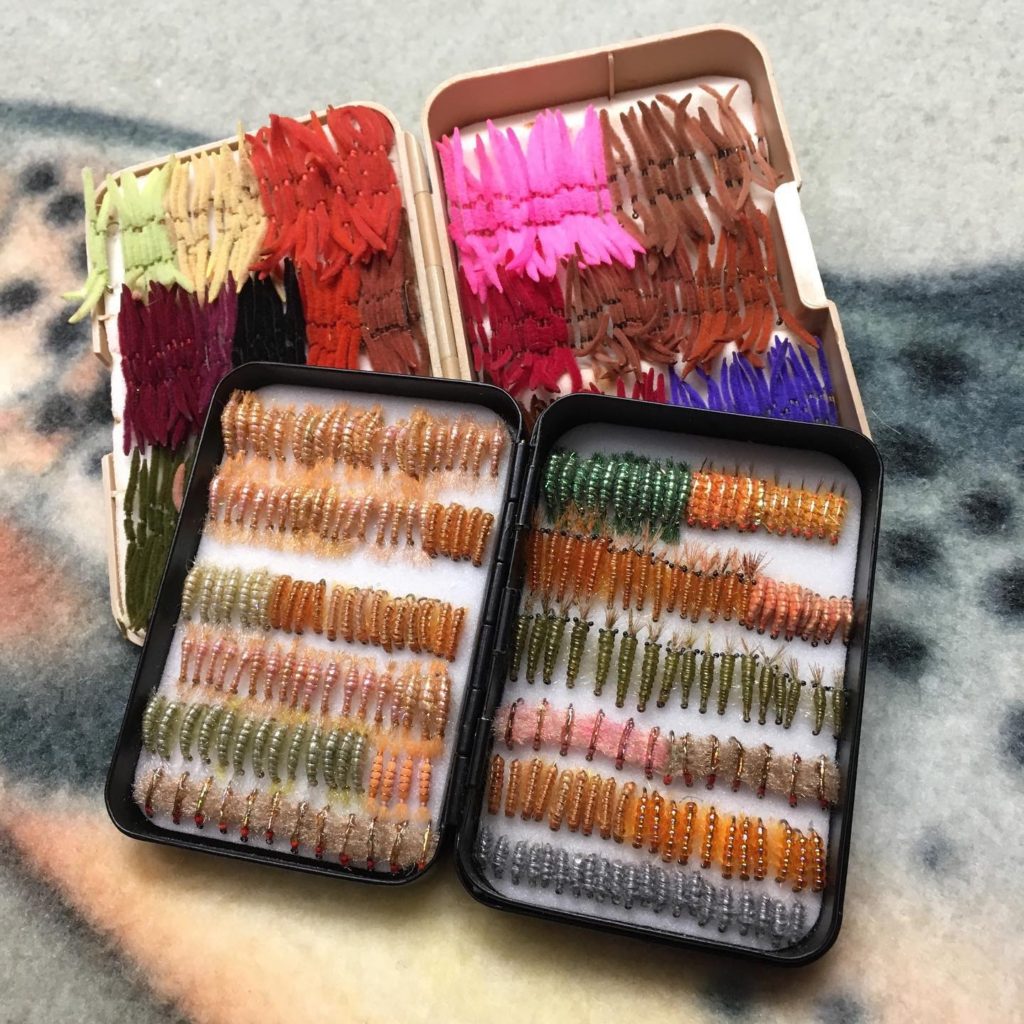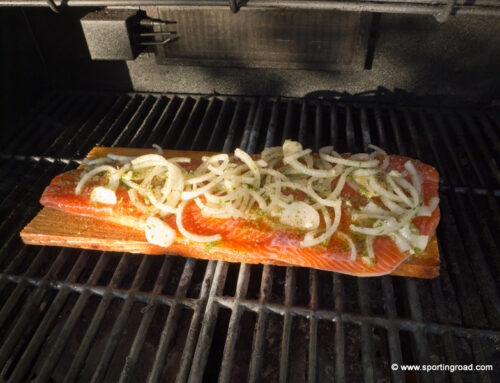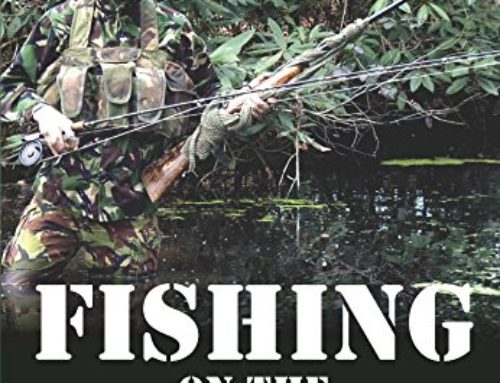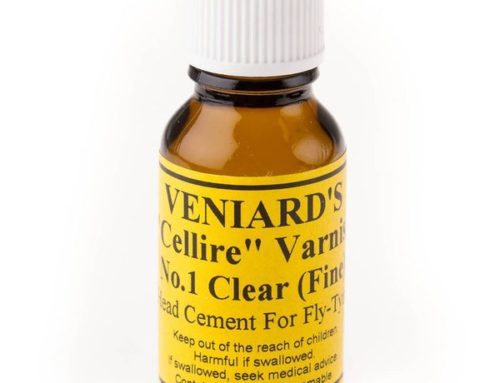Below is the scud fly tying instructions/recipe by Jeff Goff who was legendary for bringing gallon jars of scuds to a local Denver fly shop that I used to frequent, which he brought in his vehicle all the way down from Grey’s Reef, Wyoming, just to show how many were in the river during a few minute seining session he had done. It was a gallon jar and it looked like there were a million grayish scuds in it.
To date, Jeff Goff’s Scud is still the most realistic scud pattern I have ever seen, for when the fly was thrown in that jar of scuds, you couldn’t find it (a trick he liked to perform at the shop after tying one of his flies). Many more realistic plastic looking patterns have developed over the years, but they don’t look the same in that jar with the naturals, as Jeff threw a few others in the jar from the fly shop’s bins. It’s been over 25 years since those days, and I was sad to see that Jeff had passed away as I attempted to research what he was up to these days for this article, as I am grateful for this fly which has served me well throughout the Western states. I often fish it as the upper fly with the RS2 as the lower fly.
He also devised a very cute little lady bug, which I never caught any fish on, but it was a fun little pattern to give away to friends.
Jeff Goff’s Wyoming Scud
- Hook: Dia- Riki 135 scud Size 12
- Tail mallard flank fibers at 1/8” or so, yellow thread light Cahill
- Scud back light gray
- Lead weight, tie in at eye .015 and wrap to CDC and back to eye
- Crazy glue entire body
- CDC, white gray feather, hackle mash stem with pliers,
- Mallard flank antenna fibers,
- Dubbing whole body Ligas 41 (green)
- Wrap CDC, palmer style 4-5 turns
- Pull scud back over and tie off
- Larva lace mono or Danville thread
- Trim
- Apply dots with sharpie for marker eyes on the scud back near the head of the bug, which is at the tail of this fly pattern
Lady Bug
- Hook Dai Riki Scud Hook 135 #16-18
- Body: tie in orange deer hair
- Tie in one strand peacock
- Tie in one black hackle
- Wrap peacock
- Palmer the hackle
- Pull over the deer hair, humpy style
- Trim off ends
- Build up black head
- Color dots with black marker and trim hackle
Pat Dorsey has an interesting chapter and article on scuds, which you can read here. https://www.patdorseyflyfishing.com/crustaceans-and-their-limitations/ He writes:
There are approximately 90 species of scuds in North America, but the most important group in tailwaters is from the family Gammaridae. One of the most important genera is Gammarus lacustris, the freshwater olive scud.
Scuds have a flattened, segmented body, fourteen pairs of legs, antennae, and a tail. They are powerful swimmers, darting around the bottom of the stream. They use their legs and tail to travel along the substrate, twisting and turning as they swim through dense aquatic vegetation. They curl up into a ball for protection when danger arises.
Some of the best scud fishing occurs during higher flows, or periods of extreme variation. For instance, in the South Platte’s Cheesman Canyon, the rising water during the initial phases of spring runoff flushes many of the larger food organisms—scuds, aquatic worms, crane flies, and stoneflies—loose. When fish key on scuds during that time, it can be some of the best nymph fishing of the year.
Tailwater anglers should carry a variety of colors in their scud collections. The most common colors are gray-olive, tan, and orange. When I take seine samples, 99 percent of the scuds are a gray-olive, with the occasional tan scud. I have never collected an orange scud in a seine sample. Stomach pumps reveal a different scenario frequently you get a mixed bag of orange and olive scuds. It’s not clear whether the trout ate the dead scud, which turns orange, or if the scud turned orange in the trout’s belly.
For Pat Dorsey’s UV Scud, here is the recipe.
One of our all time favorites, is also Andy Kim’s micro scud.
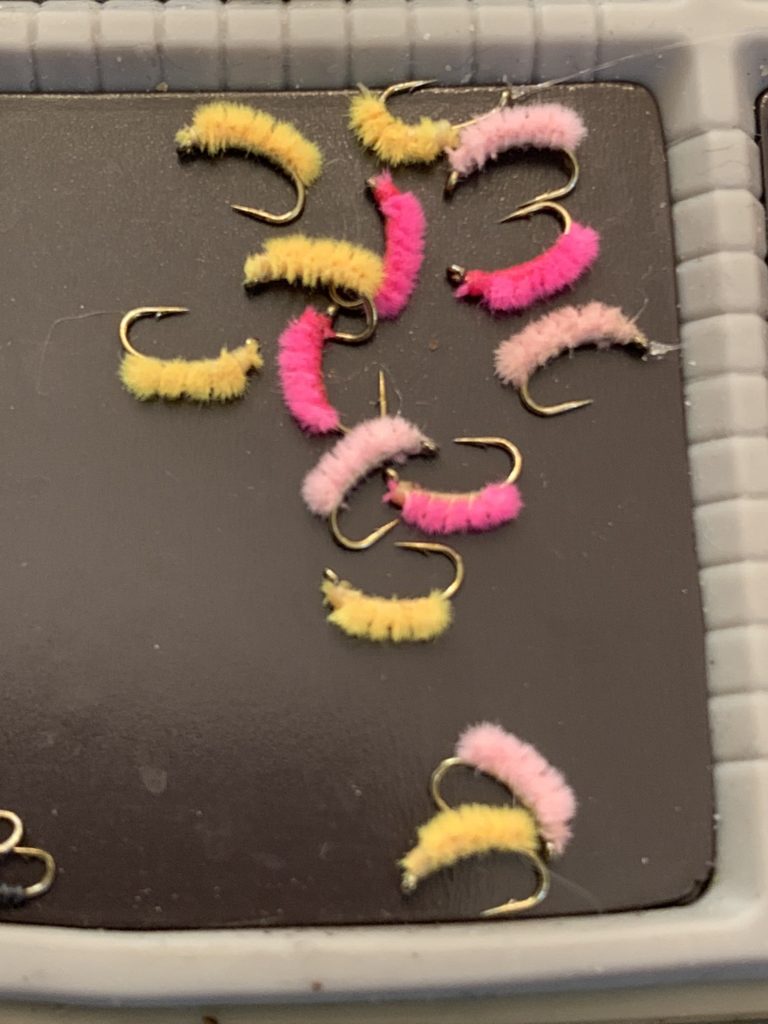
I have largely used this scud instead of the Goff scud, as I have been fishing more tailwaters than those of the freestone variety in Wyoming such as Grey’s Reef and Miracle Mile, where this Goff Scud fly was easily my best fly on most days. We have also been using some of Ferenc’s scud and sowbugs.
Another favorite scud pattern is the Killer Bug and Utah Killer Bug.

